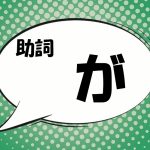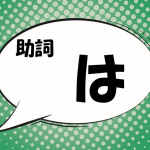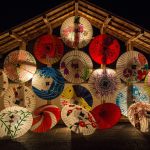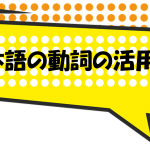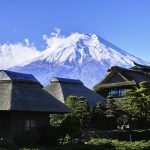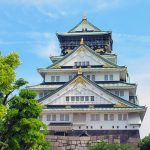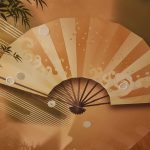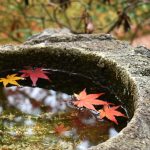
目次
What are Japanese participles?
Let’s learn indirect object particle ni/に for now.
Indirect object particle ni/に
Indirect object particle ni/に is an indirect object marker. The particle ni/に marks the indirect object of the verb. That is, it tells us who benefits from the action or gets something as a result.
ni/に indicates that the preceding noun or pronoun is the indirect object of the verb.
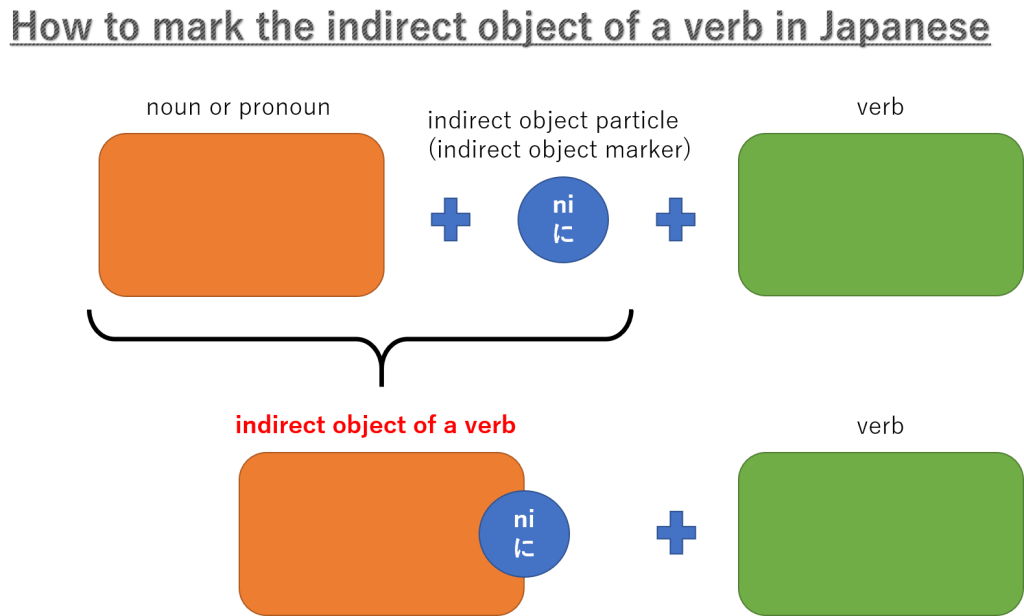
Let’s look at a few examples:
<Example 1>
Kuruma wo otooto ni ageta.
くるま を おとうと に あげた。
車 を 弟 に あげた。
[car wo/を my brother ni/に gave]
I gave my brother a car.
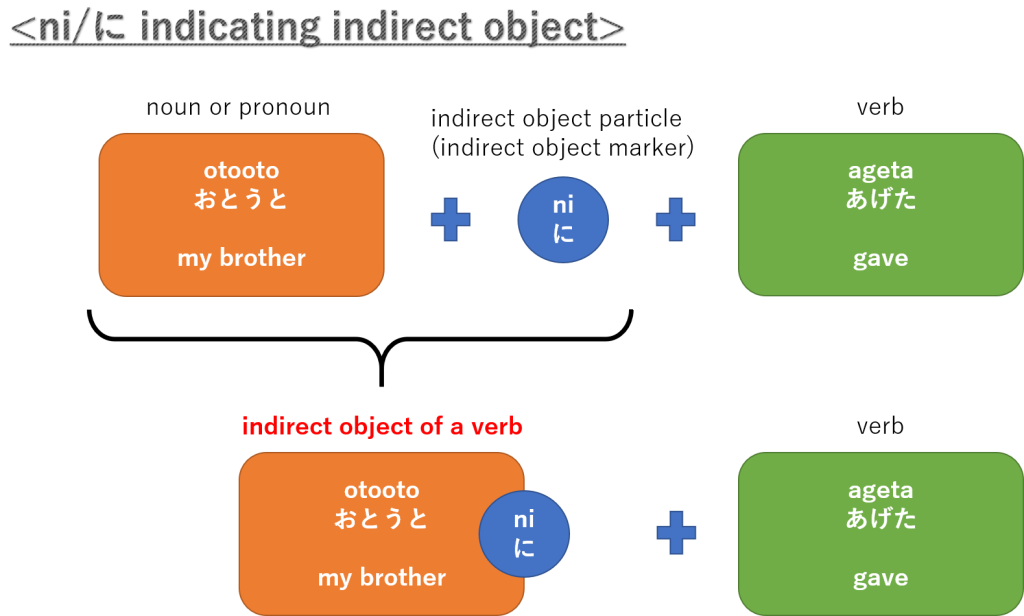
Here, ni/に comes after “otooto”, and this tells us that my brother is the person who got something.
<Example 2>
Ano fuku wa imooto ni ageta.
あの ふく は いもうと に あげた。
あの 服 は 妹 に あげた。
[that cloth wa/は my sister ni/に gave]
I gave that cloth to my sister.
My sister is the person who got something, and we know this because “imooto” is followed by ni/に.
Moreover, ni/に can be used to indicate time, direction or location. In this case, ni/に can be translated "in", "on", "at" or "to."
In reality, ni/に is like an arrow, it is always pointing towards something. In fact, many people will call ni/に the target particle. If you think about it this way, it will be easier to know when to use it.
In English, prepositions are always followed by a noun group and make a prepositional phrase. A prepositional phrase plays the grammatical role of an adjective or adverb.
Similarly, ni/に follows a noun group and make a postpositional phrase, which plays the grammatical role of an adverb. That is, postpositional phrases usually tell us more about verbs.
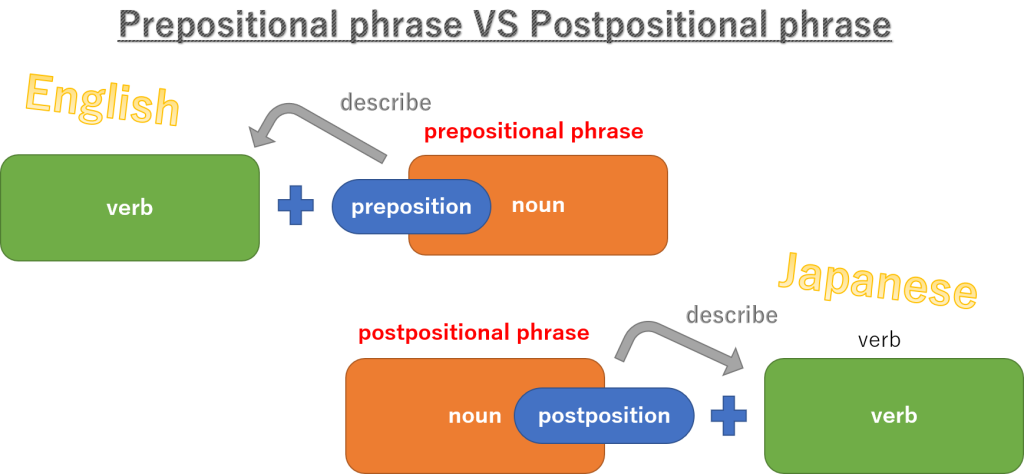
ni/に indicating time : time + ni/に
ni/に is used after time expressions to mean "at", "on", or "in." It indicates the time when an action takes place.
<Example 3>
Shichiji ni ai-mashoo.
しちじ に あいましょう。
七時 に 会いましょう。
[seven o'clock ni/に meet-let's]
Let's meet at seven o'clock.

Here, ni/に comes after “Shichiji”, and this tell us that seven o'clock is the time when the act of meeting takes place.
<Example 4>
Takeru wa doyoobi ni ki-masu.
たける は どようび に きます。
たける は 土曜日 に 来ます。
[Takeru as-for Saturday ni/に arrive]
Takeru arrives on Saturday.
Saturday is the time when the act of arriving takes place, and we know this because “doyoobi” is followed by ni/に.
<Example 5>
Kotoshi no shichigatsu ni shigoto wo yameta.
ことし の しちがつ に しごと を やめた。
今年 は 七月 に 仕事 を 辞めた。
[this year of July ni/に job quit]
I quit my job in July this year.
Here, ni/に comes after “Shichigatsu”, and this tell us that July is the time when the act of quitting takes place.
ni/に indicating destination : destination + ni/に
ni/に is used with destinations to mean "to." It indicates destination of an action involving movement.
Some verbs describe actions that involve the movement of someone or something from one place to another, such as "go", "come" or "arrive." The destination of such actions can be marked by the particle ni/に.
<Example 6>
Raishuu taiwan ni iki-masu.
らいしゅう たいわん に いきます。
来週 台湾 に 行きます。
[next week Taiwan ni/に go]
I'm going to Taiwan.
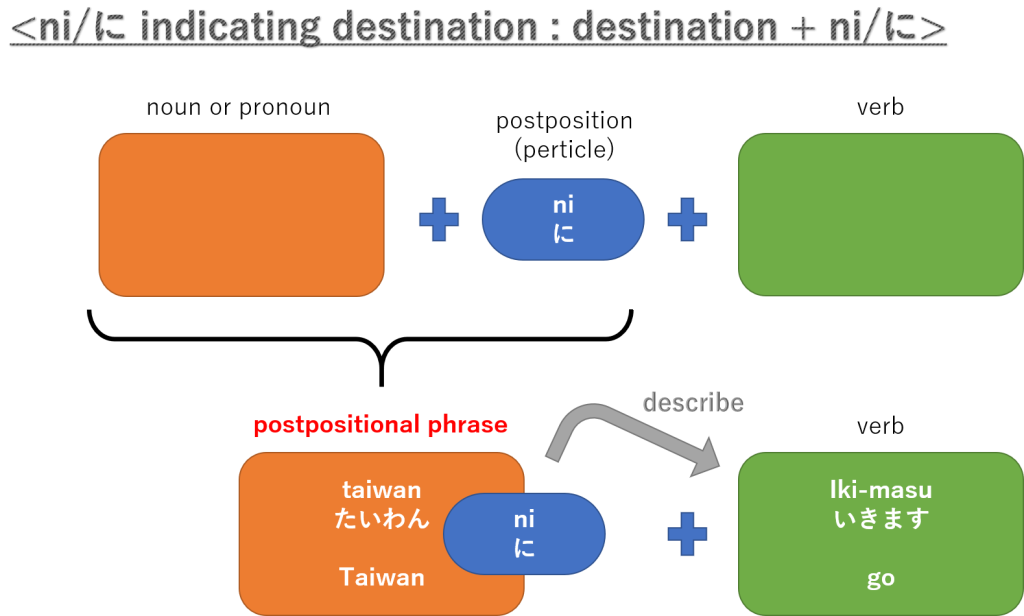
The word "taiwan" is marked by the particle ni/に. This tells us that Taiwan is the destination of the action described by the verb, which as we know is “go”.
ni/に indicating destination is most commonly translated to English as the preposition "to" but there is some exceptions. Two examples of this are "suwaru", meaning "sit", and "noru" meaning “ride”. Basically, for these verbs and a few others like them, the thing that is sat on, ridden, etc., can be thought of as the destination of these actions.
<Example 7>
Isu ni suwatte kudasai.
いす に すわって ください。
椅子 に 座って 下さい。
[chair ni/に sit please]
Please sit on the chair.
The chair can be thought of as the destination of act of sitting.
<Example 8>
basu ni nori mashoo.
ばす に のり ましょう。
バス に 乗り ましょう。
[bus ni/に ride let's]
Let's get on the bus.
It may help to think of the word "noru" (to ride) as describing the act of getting on something, as opposed to being on something, as is implied in English.
Here is the list of verbs used with the particle ni/に which indicates destination of an act.
| Verbs used with destination particle ni/に | |
| go to ... | ... ni iku ... に いく/行く |
| come to ... | ... ni kuru ... に くる/来る |
| arrive at/on/in ... | ... ni tsuku ... に つく/着く ... ni toochaku-suru ... に とうちゃくする/到着する |
| ride on ... | ... ni noru ... に のる/乗る |
| get on ... | ... ni noru ... に のる/乗る |
| sit on ... | ... ni suwaru ... に すわる/座る |
ni/に indicating location : location + ni/に
ni/に indicates location where something exists and can be translated as "in", "on", "at", "under", etc...
Most actions take place in a location, but there are a few verbs that describe the act of simply “being” in a location. For these, the location is marked by the particle ni/に.
To describe where something is “being” or “existing”, place the particle ni/に immediately after the word or phrase that describes the location of existence.
<Example 9>
Boku no ie wa Kyooto ni ari-masu.
ぼく の いえ は きょうと に あります。
僕 の 家 は 京都 に あります。
[I of house wa/は Kyoto ni/に is]
My house is in Kyoto.
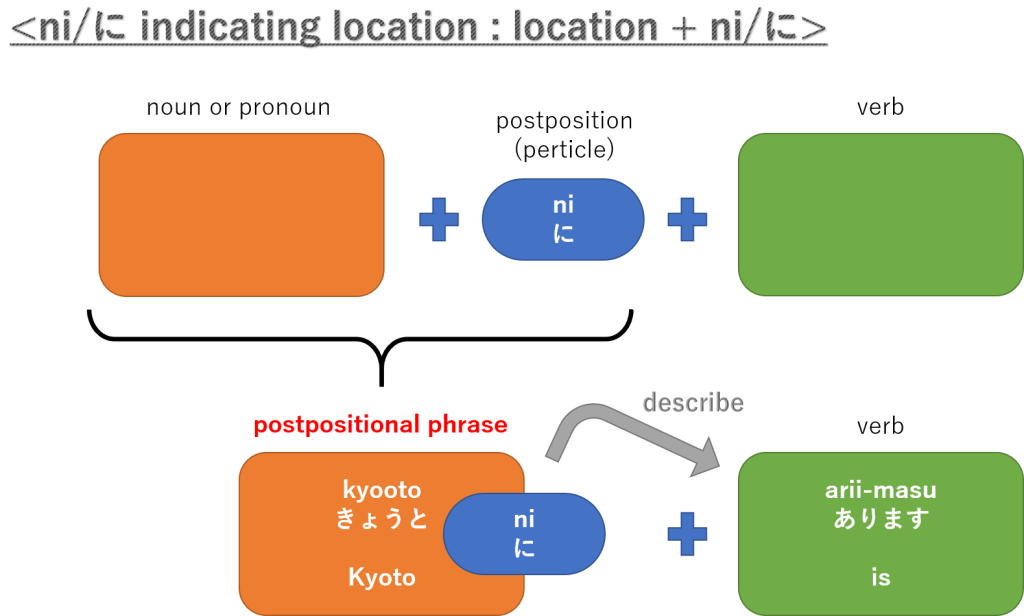
"Kyooto" is marked by the particle ni/に. This tells us that Kyoto is the location where my house exists.
<Example 10>
Tsukue no ue ni hon ga ari-masu.
つくえ の うえ に ほん があります。
机 の 上 に 本 が あります。
[desk of above ni/に book is]
There is a book on the desk.
ni/に can be used with direction words. To make a word that has the same meaning with English "on", use "ue", meaning "above", with ni/に. So, "ue ni" can be translated as "on."
<Example 11>
Ki no shita ni benchi ga ari-masu.
き の した に べんち があります。
木 の 下 に ベンチ が あります。
[tree of below ni/に bench is]
There is a bench under the tree.
Here, "shita", meaning "below", is used with ni/に to make "shita ni" which means "below" in English.
You may also like
https://jpgrammar.com/particle-o/
